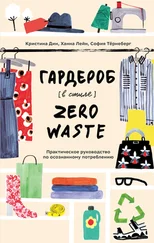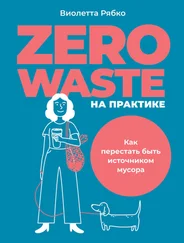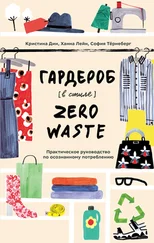However, you don’t have to look far to read or hear statements that demonize ingredients — or worse, demonize the farmers and ranchers who work hard to grow and cultivate our food. The topic of sustainability has garnered a lot of attention over the past several years. Concerns are often encompassed within the context of scientific, economic, and political stances. Like just about every topic these days, a lot of misinformation and disagreement exists.
These are challenging times for the world. Food waste contributes greenhouse gasses to the environment and is part of the climate change issue. You and I can start by making changes in our own kitchens, but it’s also important to understand a little about what sustainability in agriculture looks like and the roles of all the other players. Many people, across all food-related industries, are working to manage the nexus between food and climate to feed a growing population while also protecting the planet.
Sustainability in Agriculture: Economic, Environmental, and Social Concerns
Big-picture sustainability encompasses concerns for the environment as well as social equity and economic viability. Without one, you can’t have the other. For the purpose of this book, I introduce these pillars in terms of food production and procurement.
Meeting your needs and the needs of your grandchildren
Today’s world looks very different than it did in the 1960s. Global population has almost reached 7.9 billion people in 2021. That’s about 6 billion more people than in the 1920s and double the people of the 1960s. That’s a lot of mouths to feed. The need for water is also at a critical junction in many areas of the Western United States, including California, which produces about 50 percent of the fruits and vegetables brought to market year round. In addition, about a third of the world live in poverty with limited access to energy, water, or food. So, you see, focusing on sustainability is as important to humanity as it is to the planet.
We also now consume more resources than ever. Urban areas consume more power than rural settings, but we all use resources to light buildings, power appliances, and heat offices and schools. It’s estimated that we use more resources each year than we put back. However, farmers are pretty efficient.
According to the International Food Information Council’s (IFIC) 2021 Food & Health Survey, 42 percent of the 1,014 consumers surveyed (ages 18 to 80) believed their food choices have a moderate to significant impact on the environment. However, the perceived factors (sustainably sources labeling, recyclable packaging, non-GMO labels, locally grown) that those surveyed equate with “environmentally sustainable” don’t necessarily relate to actual sustainability practices and may not be well regulated or defined. Opinions vary by generation as well. About 54 percent of Baby Boomers and Gen X say it’s “at least somewhat” important that the food they buy is environmentally sustainable, whereas 61 percent of Millennials say it’s “very/somewhat” important. Those surveyed agreed that it’s difficult to know whether a food choice is environmentally sustainable, with 53 percent agreeing that if it was easier to understand the environmental sustainability in food products, it would influence the choices they make. That, my friends, is part of the goals of this chapter and this book — to help you understand the bigger picture.
 From a personal perspective, it’s important to understand how to conserve in your own household so that your grandchildren will continue to reap the benefits of safe and adequate housing and food.
From a personal perspective, it’s important to understand how to conserve in your own household so that your grandchildren will continue to reap the benefits of safe and adequate housing and food.
Using natural resources efficiently
An environmentalist may see the environment as separate from humanity. However, farmers consider themselves stewards of the environment as they protect their land while producing food for people to eat.
While many people have a romantic image of who a farmer is, the reality is that today’s farmers have a broad understanding of natural resources, the biogeochemical nature of the earth, and the integrity of the biosphere. In other words, they’re scientists!
Modern farmers understand that a sustainable food system must remain within the planetary boundaries without irreversible impacts to the ecological systems. Even though the resources utilized to grow and produce food are sometimes under scrutiny, ultimately farmers are working toward increased production while using fewer resources (less land and water).
 In fact, agriculture has to produce enough food for 10 billion people by 2050, while using fewer resources. This will require a team effort across the globe for innovation and partnership.
In fact, agriculture has to produce enough food for 10 billion people by 2050, while using fewer resources. This will require a team effort across the globe for innovation and partnership.
Regenerative agriculture is a relatively new term used to describe a holistic, principles-based approach to farming and ranching that focuses on the health of the ecological system, not just the production of crops or food. It may include a plan for cow grazing to restore pastures and grasslands. When animals graze, they add nutrients back into the soil, helping capture the carbon released. You may find a lot of different commentary surrounding this term; however, some of the practices used in regenerative ag aren’t new. Many U.S. farms have adopted processes that support this idea over the years, including no-till farming and utilization of cover crops. By limited or non-tilling of land, a farmer can maintain a more nutrient-rich soil. Planting cover crops helps maintain soil erosion and build organic matter.
The economist understands sustainability to mean there are finite resources and income to generate enough food for human consumption. This should cue us that it’s important for nations to consider ways to transition to more viable food systems and encourage consumers to change some of our personal habits. As the saying goes, you can’t keep repeating the same actions and expect a different result. Working toward a more sustainable food system could require reducing the overall demand of food and a shift in resources. I mean, how many flavors of potato chips do we really need?
Many scientists, economists, and industries are working toward improving agricultural systems globally. For instance, the World Economic Forum was established in 1971 as the International Organization for Public-Private Cooperation, to help shape global, regional, and industry agendas. Improving global sustainability in agricultural practices is part of their mission. They believe it will be vital to adopt technology, use more data to drive outputs, and recruit many more young people to the farming profession.
Other sustainability options include finding new ways to grow or create food in environments outside of the farm. While the idea of “lab food” may not feel comfortable, innovators are discovering amazing ways to conserve resources and make something out of almost nothing (see the later section “ Upcycling”).
 Encouraging less-intensive use of resources and improvements in the economic access to food are potential solutions for sustainable agriculture. Questions about how to feed the world are important, even if there isn’t universal agreement on the best solutions. However, the goal of this book isn’t to tell you what to start or stop eating. It’s simply to work on what we, as consumers, have control of in our personal little worlds and waste less food in our kitchens.
Encouraging less-intensive use of resources and improvements in the economic access to food are potential solutions for sustainable agriculture. Questions about how to feed the world are important, even if there isn’t universal agreement on the best solutions. However, the goal of this book isn’t to tell you what to start or stop eating. It’s simply to work on what we, as consumers, have control of in our personal little worlds and waste less food in our kitchens.
Читать дальше

 From a personal perspective, it’s important to understand how to conserve in your own household so that your grandchildren will continue to reap the benefits of safe and adequate housing and food.
From a personal perspective, it’s important to understand how to conserve in your own household so that your grandchildren will continue to reap the benefits of safe and adequate housing and food. In fact, agriculture has to produce enough food for 10 billion people by 2050, while using fewer resources. This will require a team effort across the globe for innovation and partnership.
In fact, agriculture has to produce enough food for 10 billion people by 2050, while using fewer resources. This will require a team effort across the globe for innovation and partnership.










